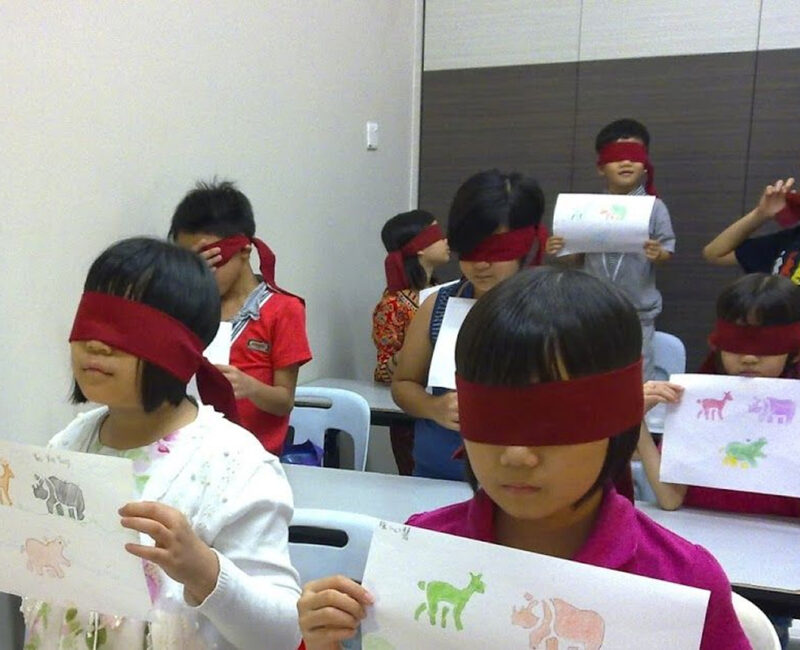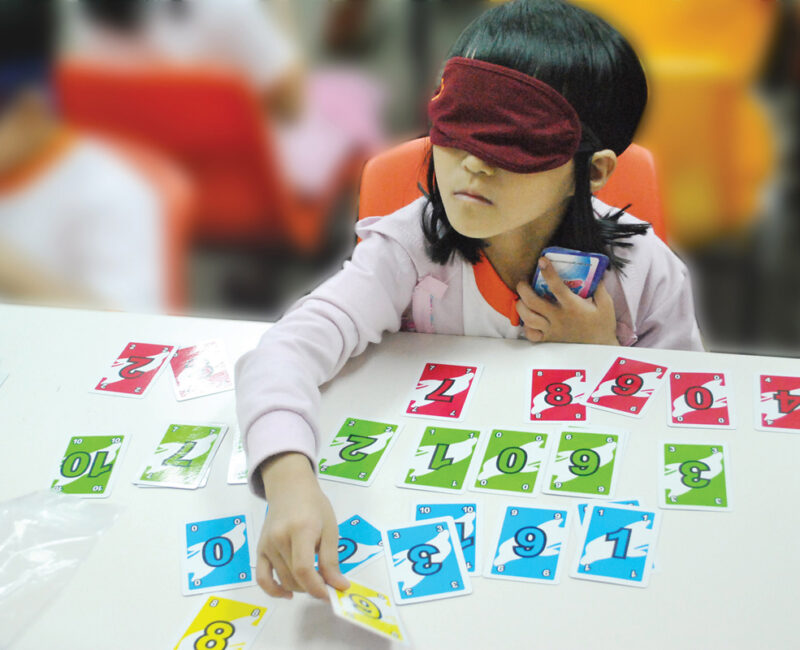Faster Vedic Maths- Ancient From Vedas



For example, ‘Vertically and Crosswise` is one of these Sutras. These formulae tell you as to how does the mind work naturally and are thus extremely helpful in guiding the students to the correct method of solution. Vedic mathematics includes Arithmetic, Algebra, Geometry, Calculus and other forms of Maths.
The time consuming huge sums can often be solved quickly and without any mistakes by using the Vedic method. These outstanding and fine-looking methods are merely a small part of an entire system of mathematics, which is way too methodical than the modern system. Vedic Mathematics manifests the logical and amalgamated structure of mathematics with the help of complementary, direct and easy methods. The most astonishing feature of the Vedic system is its coherence. Instead of a mixture of unrelated techniques, the entire system is marvelously interconnected and fused: the general method of multiplication, for example, is easily reversed to permit single-line divisions and the straightforward squaring method can be upturned to give one-line square roots. All of these methods are easily understood. This unifying quality gives immense satisfaction and makes maths enjoyable and easy and also motivates innovation.
The simplest benefit of Vedic Mathematics is that it enables us to carry out calculations mentally. There are many other advantages in using a flexible system. Students can discover their very own methods;,which leads to more imaginative, interested and intelligent students. Research is being carried out in many areas. Researches include studying Vedic Maths effects on children; developing powerful applications of the Vedic Sutras in different fields such as geometry, calculus, computing etc. The real charm and usefulness of Vedic Mathematics can be fully treasured only after practicing the system actually.
Perhaps the most striking feature of the Vedic system is its coherence. The whole system is beautifully interrelated and unified: the general multiplication method, for example, is easily reversed to allow one-line divisions and the simple squaring method can be reversed to give one-line square roots. And these are all easily understood. This unifying quality is very satisfying, it makes mathematics easy and enjoyable and encourages innovation.
In the Vedic system ‘difficult’ problems or huge sums can often be solved immediately by the Vedic method. These striking and beautiful methods are just a part of a complete system of mathematics which is far more systematic than the modern ‘system’. Vedic Mathematics manifests the coherent and unified structure of mathematics and the methods are complementary, direct and easy.
The simplicity of Vedic Mathematics means that calculations can be carried out mentally (though the methods can also be written down). There are many advantages in using a flexible, mental system. Pupils can invent their own methods, they are not limited to the one ‘correct’ method. This leads to more creative, interested and intelligent pupils.
Interest in the Vedic system is growing in education where mathematics teachers are looking for something better and finding the Vedic system is the answer. Research is being carried out in many areas including the effects of learning Vedic Maths on children; developing new, powerful but easy applications of the Vedic Sutras in geometry, calculus, computing etc. The basis of Vedic mathematics, are the 16 sutras, which attribute a set of qualities to a number or a group of numbers. The ancient Hindu scientists (Rishis) of Bharat in 16 Sutras (Phrases) and 120 words laid down simple steps for solving all mathematical problems in easy to follow 2 or 3 steps.
Vedic Mental or one or two line methods can be used effectively for solving divisions, reciprocals, factorization, HCF, squares and square roots, cubes and cube roots, algebraic equations, multiple simultaneous equations, quadratic equations, cubic equations, bi-quadratic equations, higher degree equations, differential calculus, Partial fractions, Integrations, Pythagoras theorem, Apollonius Theorem, Analytical Conics and so on.
Benefits of Vedic Math
Vedic Mathematics is more than 10-15 times or over 1500% times faster than the normal mathematics. How do we say this? You can test it yourself. We tested a normal student to calculate 998 x 997; he took the time of 85 seconds and did it correctly in the normal way. And then when we taught him the Vedic Method of Multiplication the same person could do it in about 5 seconds. Not only did this person suddenly become more confident, bubbling with energy and high self-esteem. He wanted to solve more problems which showed a remarkable increase in his interest in the subject.
- Vedic Mathematics is 10-15 times faster than normal Math.
- Better and Much Improved Academic Performance in school and Instant Results.
- Sharpens your mind, increases mental agility and intelligence.
- A Complete System comprising all the benefits of Mental Math.
- Develops Left & Right Sides of the brains by increasing visualization and concentration abilities.
- Vedic Mathematics cultivates an interest for numbers and eliminates the math-phobia present in the students.
- Vedic Math is easy to understand, easy to apply and easy to remember.
- Increases your speed and accuracy. Become a Mental Calculator yourself.
- Improves memory and boosts self-confidence.
Vedic Math Sutras
Sankaracharya of Govardhan Matha Puri Jagadguru Swami Sri Bharati Krishna Teerthaji Maharaja has explored the encoded vedic mysteries and retrieved a set of mathematical sutras from the Vedic literatures.
Swami Sri Bharati Krishna Teerthaji was a scholar extraordinaire. A profound master of modern subjects including mathematics.
Later after attaining sanyasa he went into solitude at Saradha Peeth in Sringeri and relentlessly pursued the study of Vedic scriptures with the consequence that he reconstructed a set of 16 sutras and 13 sub sutras from the Vedic text covering every branch and part of mathematics.
We owe deeply to the Sankaracharya for his revelation to popularize Vedic Mathematics.
- By one more than the one before
- All from 9 and the last from 10
- Vertically and Cross-wise.
- Transpose and Apply
- If the Samuccaya is the Same it is Zero
- If One is in Ratio the Other is Zero
- All the Multipliers
- By Addition and by Subtraction
- The Remainders by the Last Digit
- The Ultimate and Twice the Penultimate
- Differential Calculus
- By the Deficiency
- By One Less than the One Before
- By the Completion or Non-Completion
- Specific and General
- The Product of the Sum
- Translation
- Proportionately
- The Remainder Remains Constant
- The First by the First and the Last by the Last
- For 7 the Multiplicand is 143
- By Osculation
- Lessen by the Deficiency
- Whatever the Deficiency lessen by that amount and set up
- the Square of the Deficiency.
- Last Totaling 10
- Only the Last Terms
- By Alternative Elimination and Retention
- The Sum of the Products
- By Mere Observation
- The Product of the Sum
- The Sum of the Products
Vedic Math Sutras
Sankaracharya of Govardhan Matha Puri Jagadguru Swami Sri Bharati Krishna Teerthaji Maharaja has explored the encoded vedic mysteries and retrieved a set of mathematical sutras from the Vedic literatures.
Swami Sri Bharati Krishna Teerthaji was a scholar extraordinaire. A profound master of modern subjects including mathematics.
Later after attaining sanyasa he went into solitude at Saradha Peeth in Sringeri and relentlessly pursued the study of Vedic scriptures with the consequence that he reconstructed a set of 16 sutras and 13 sub sutras from the Vedic text covering every branch and part of mathematics.
We owe deeply to the Sankaracharya for his revelation to popularize Vedic Mathematics.
- By one more than the one before
- All from 9 and the last from 10
- Vertically and Cross-wise.
- Transpose and Apply
- If the Samuccaya is the Same it is Zero
- If One is in Ratio the Other is Zero
- All the Multipliers
- By Addition and by Subtraction
- The Remainders by the Last Digit
- The Ultimate and Twice the Penultimate
- Differential Calculus
- By the Deficiency
- By One Less than the One Before
- By the Completion or Non-Completion
- Specific and General
- The Product of the Sum
- Translation
- Proportionately
- The Remainder Remains Constant
- The First by the First and the Last by the Last
- For 7 the Multiplicand is 143
- By Osculation
- Lessen by the Deficiency
- Whatever the Deficiency lessen by that amount and set up
- the Square of the Deficiency.
- Last Totaling 10
- Only the Last Terms
- By Alternative Elimination and Retention
- The Sum of the Products
- By Mere Observation
- The Product of the Sum
- The Sum of the Products
Vedic Math Sutras
- By one more than the one before
- All from 9 and the last from 10
- Vertically and Cross-wise.
- Transpose and Apply
- If the Samuccaya is the Same it is Zero
- If One is in Ratio the Other is Zero
- By Addition and by Subtraction
- By the Completion or Non-Completion
- Differential Calculus
- By the Deficiency
- Specific and General
- The Remainders by the Last Digit
- The Ultimate and Twice the Penultimate
- By One Less than the One Before
- The Product of the Sum
- All the Multipliers
- By one more than the one before
- All from 9 and the last from 10
- Vertically and Cross-wise.
- Transpose and Apply
- If the Samuccaya is the Same it is Zero
- If One is in Ratio the Other is Zero
- By Addition and by Subtraction
- By the Completion or Non-Completion
- Differential Calculus
- By the Deficiency
- Specific and General
- The Remainders by the Last Digit
- The Ultimate and Twice the Penultimate
- By One Less than the One Before
- The Product of the Sum
- All the Multipliers
Syllabus
| Level | Syllabus |
|---|---|
| Vedic Math Level 1 |
Multiply
|
| Vedic Math Level 2 | Addition
|
Testimonials

Kshipra P Motikar

Ujjwal Wadera

Shikha Sharma
Frequently Asked Questions
India's past could well help them make it in today's world.
It is amazing how with the help of 16 Sutras and 16 sub-sutras, the Vedic seers were able to mentally calculate complex mathematical problems.
Vedic Mental or one or two line methods can be used effectively for solving divisions, reciprocals, factorisation, HCF, squares and square roots, cubes and cube roots, algebraic equations, multiple simultaneous equations, quadratic equations, cubic equations, bi-quadratic equations, higher degree equations, differential calculus, Partial fractions, Integrations, Pythogorustheoram, Apollonius Theoram, Analytical Conics and so on.
India's past could well help them make it in today's world.
It is amazing how with the help of 16 Sutras and 16 sub-sutras, the Vedic seers were able to mentally calculate complex mathematical problems.
Staff recruitment is never a problem for MaxMind programs, since we need normal people (even under graduates) you won’t find any problem in recruiting staff. We will train all your people at no extra cost.
A master must be a master of his subject, this is one way how MaxMind gains edge, we know our subject well and we know how to create masters. Our training modules makes you perfect and not less than any master of the subject, if you continue your study further you can become master of masters but just completing the course training from MaxMind will sure make you a MASTER. This is our speciallity and you can depend upon us.
Almost nothing, we have designed the programs as home based business, so if you run the programs from your home and you teach yourself, you will not have any recurring fixed expenses. Even when you run it as a full time program from a commercial location the recurring costs are very nominal.
How much time I need for this business?
MaxMind businesses can be run as full time or part time business. If you plan to take this opportunity as full time business, you will need to give almost 5-6 hours a day and as part time business it will be just .10-15 hours a week, usually on holidays & Sundays. But even as a part time entrepreneurs people generate revenues greater than their full time ventures.
MaxMind programs are ideally designed as Home Based Business opportunities, so the demand for infrastructure is reduced to minimum & you just need one classroom setup with seating capacity of 20. It can be your home or else you can just tie up with some existing play school to conduct classes.






